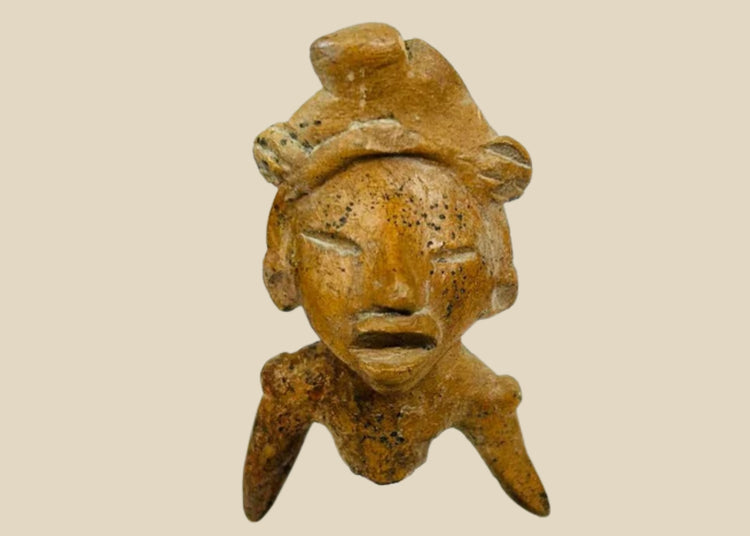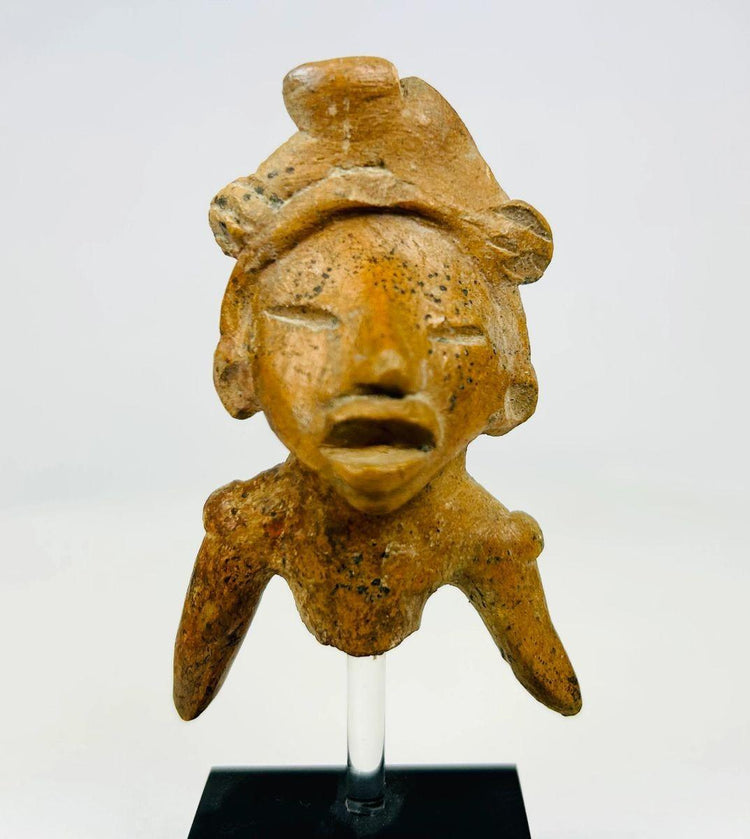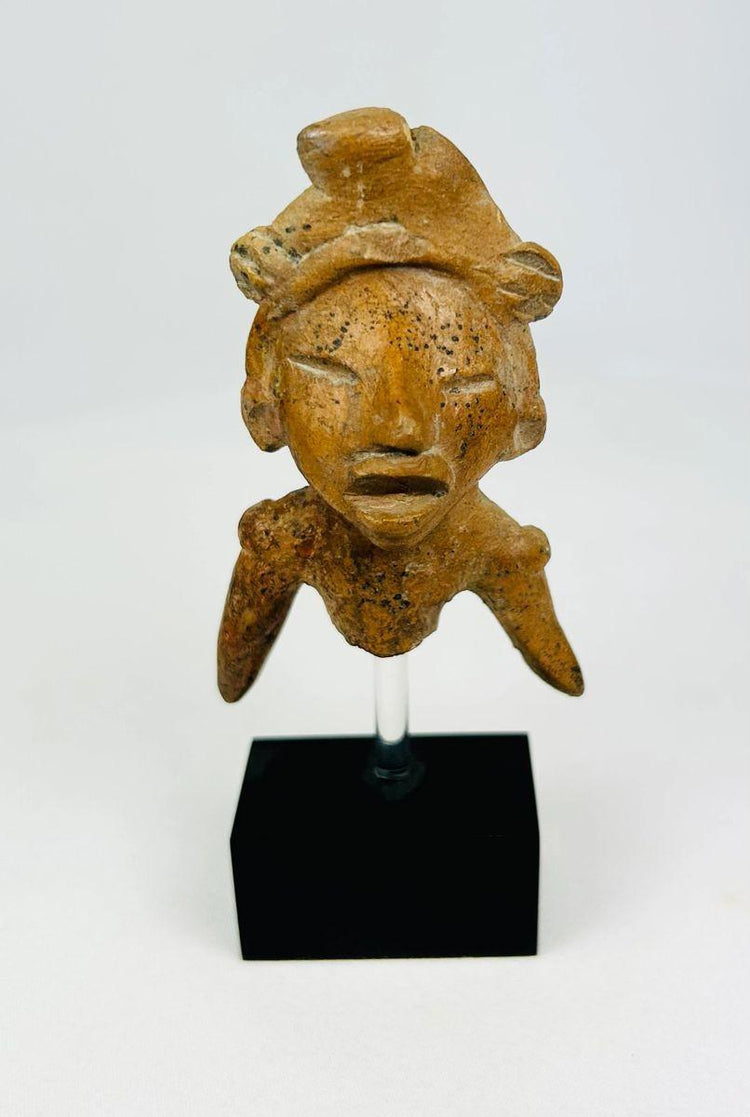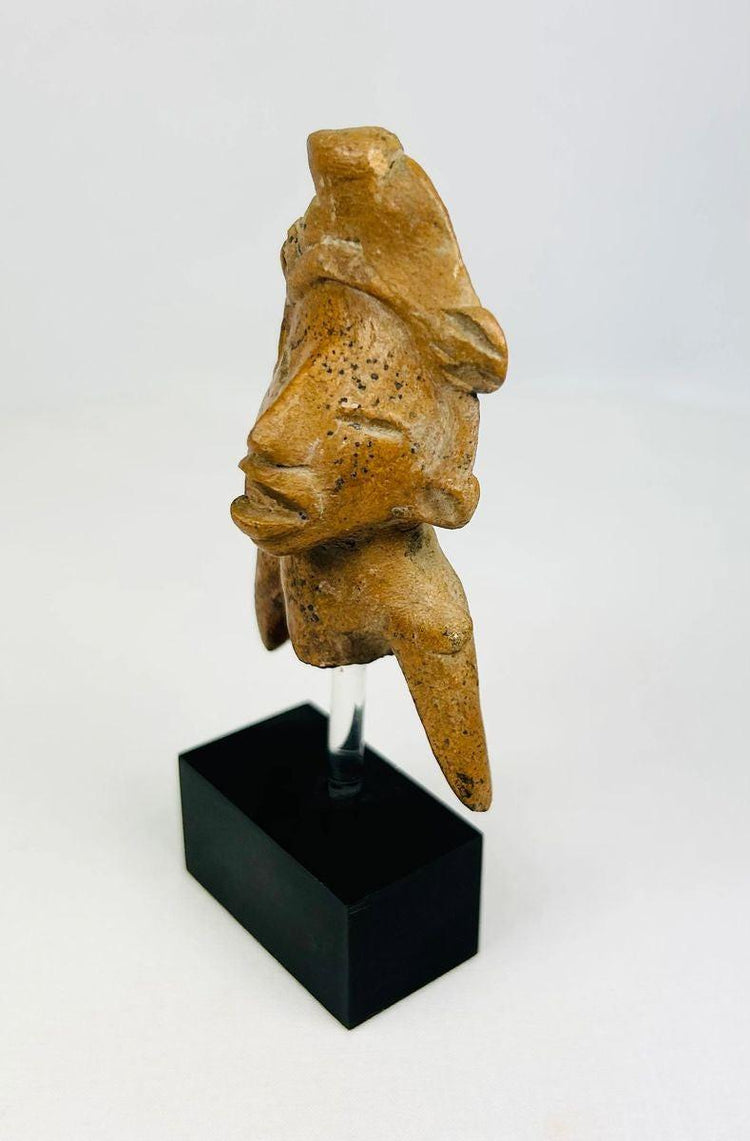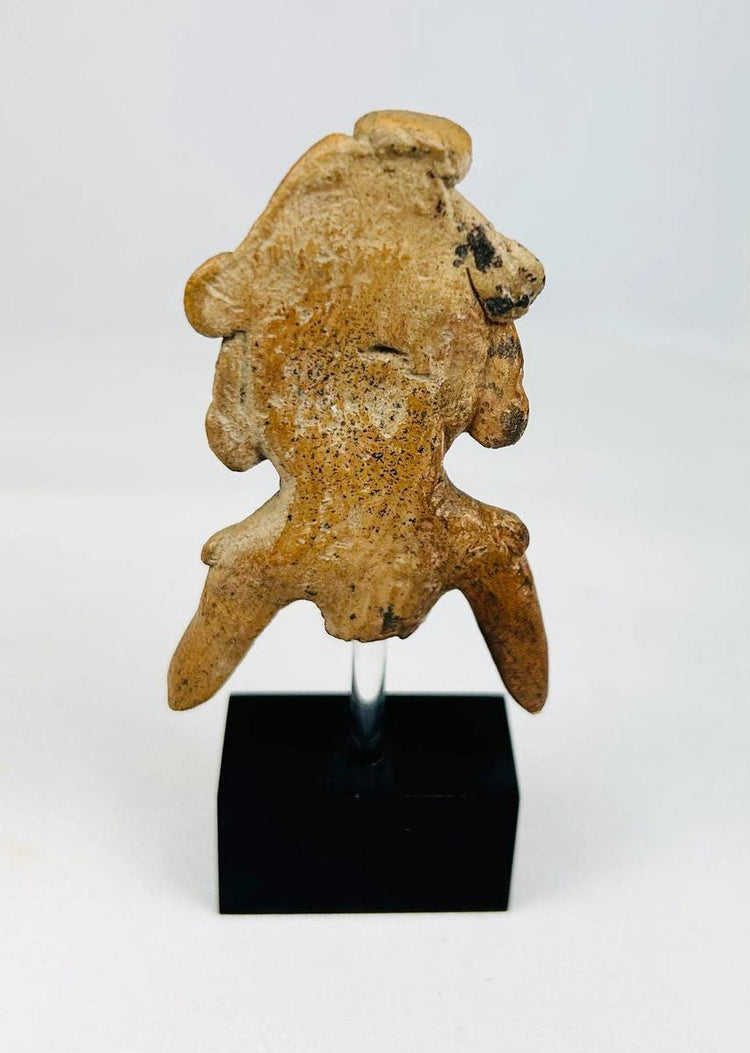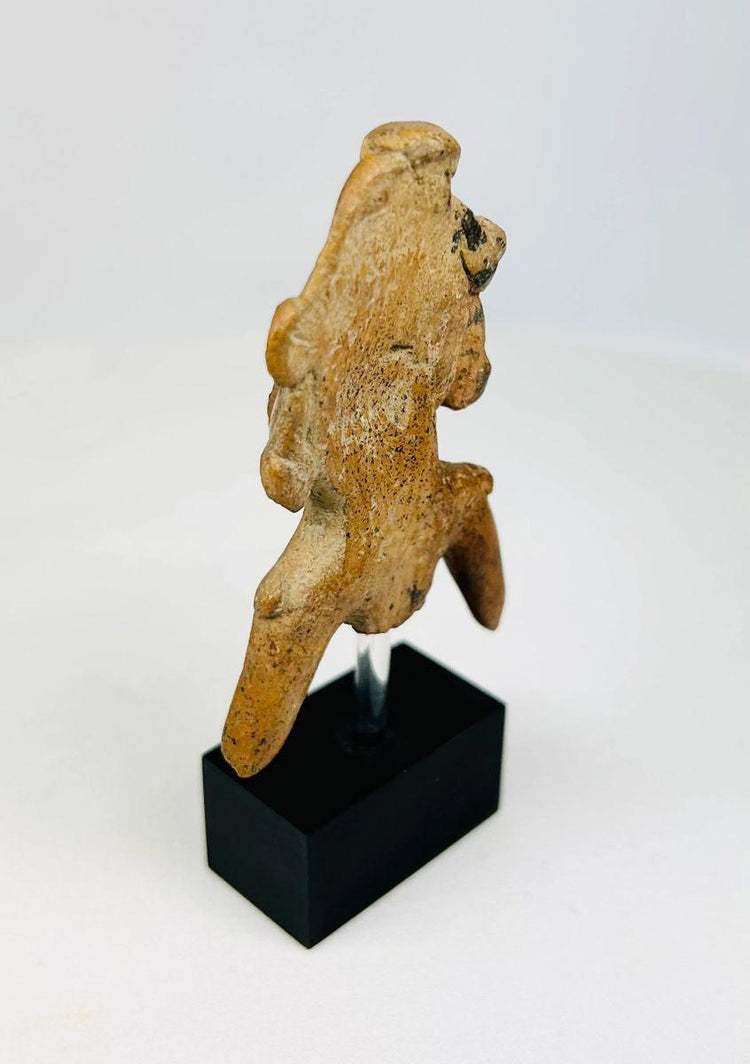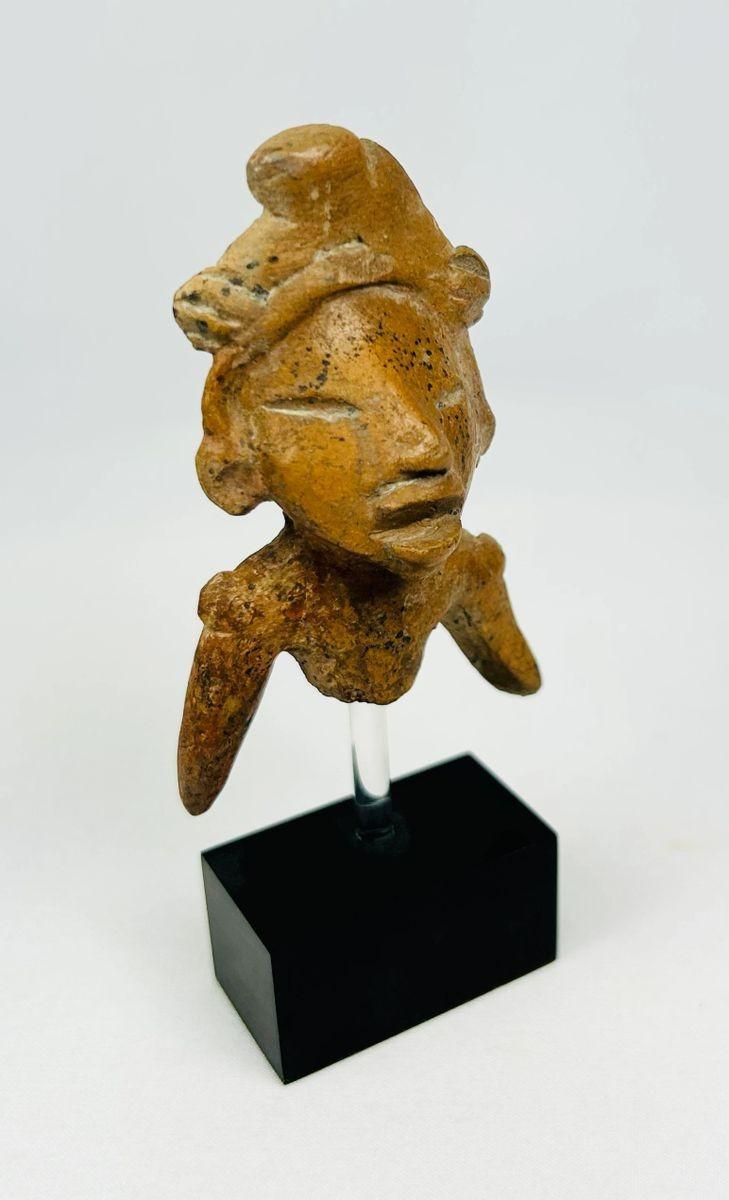West Mexican Shaft Tomb Figure Fragment | Terracotta Human Effigy with Headdress | 300 BCE–300 CE
Description
More
Less
Historical Context & Origin
Region: West Mexico (likely Nayarit or Jalisco)
Material: Terracotta (fired clay)
Period: Late Preclassic to Early Classic Period, circa 300 BCE – 300 CE
Description
This is a striking fragmentary terracotta figure representing a human form from the ancient West Mexican shaft tomb tradition. Rendered with stylized facial features, deeply incised eyes, and an expressive open mouth, the figure wears a dramatic headdress or turban-like crest, possibly signifying high status or ritual significance. The remaining torso and arms are broad and angled, reflecting the expressive style common to Ixtlán del Río-type figures. Mounted on a custom black stand for display, the piece retains beautiful surface deposits and patina, with mottled mineral encrustation and fire-clouding from the original firing process. Despite its fragmentary state, the sculpture conveys a powerful sense of character and cultural identity, emblematic of the spiritual and ceremonial role these effigies played in ancient West Mexican burial practices.
Features
- Stylized facial features with slanted eyes and full lips
- Flattened crown or crest-like headdress
- Truncated torso with angled arm stubs
- Reddish-brown burnished surface with mineral deposits
- Mounted on a custom museum-style display stand
Cultural Significance
Figurines such as this were typically interred in deep shaft tombs alongside the deceased, serving as companions, guardians, or symbolic representatives of the individual’s community, ancestors, or spirit guides. These sculptures provide rare insight into the social structures, attire, and spiritual beliefs of ancient West Mexican cultures, which left no written records but expressed themselves richly through funerary art.
Condition
Fragmentary condition as excavated. Losses to the lower body and arms, with encrustations, pitting, and wear consistent with burial and age. Stable and well-preserved surface with attractive patina.
Dimensions (approximate)
Height (with stand): 4 in
Width: 1.5 in
Age
Estimated 300 BCE – 300 CE
Description
Historical Context & Origin
Region: West Mexico (likely Nayarit or Jalisco)
Material: Terracotta (fired clay)
Period: Late Preclassic to Early Classic Period, circa 300 BCE – 300 CE
Description
This is a striking fragmentary terracotta figure representing a human form from the ancient West Mexican shaft tomb tradition. Rendered with stylized facial features, deeply incised eyes, and an expressive open mouth, the figure wears a dramatic headdress or turban-like crest, possibly signifying high status or ritual significance. The remaining torso and arms are broad and angled, reflecting the expressive style common to Ixtlán del Río-type figures. Mounted on a custom black stand for display, the piece retains beautiful surface deposits and patina, with mottled mineral encrustation and fire-clouding from the original firing process. Despite its fragmentary state, the sculpture conveys a powerful sense of character and cultural identity, emblematic of the spiritual and ceremonial role these effigies played in ancient West Mexican burial practices.
Features
- Stylized facial features with slanted eyes and full lips
- Flattened crown or crest-like headdress
- Truncated torso with angled arm stubs
- Reddish-brown burnished surface with mineral deposits
- Mounted on a custom museum-style display stand
Cultural Significance
Figurines such as this were typically interred in deep shaft tombs alongside the deceased, serving as companions, guardians, or symbolic representatives of the individual’s community, ancestors, or spirit guides. These sculptures provide rare insight into the social structures, attire, and spiritual beliefs of ancient West Mexican cultures, which left no written records but expressed themselves richly through funerary art.
Condition
Fragmentary condition as excavated. Losses to the lower body and arms, with encrustations, pitting, and wear consistent with burial and age. Stable and well-preserved surface with attractive patina.
Dimensions (approximate)
Height (with stand): 4 in
Width: 1.5 in
Age
Estimated 300 BCE – 300 CE
You May Also Like
























